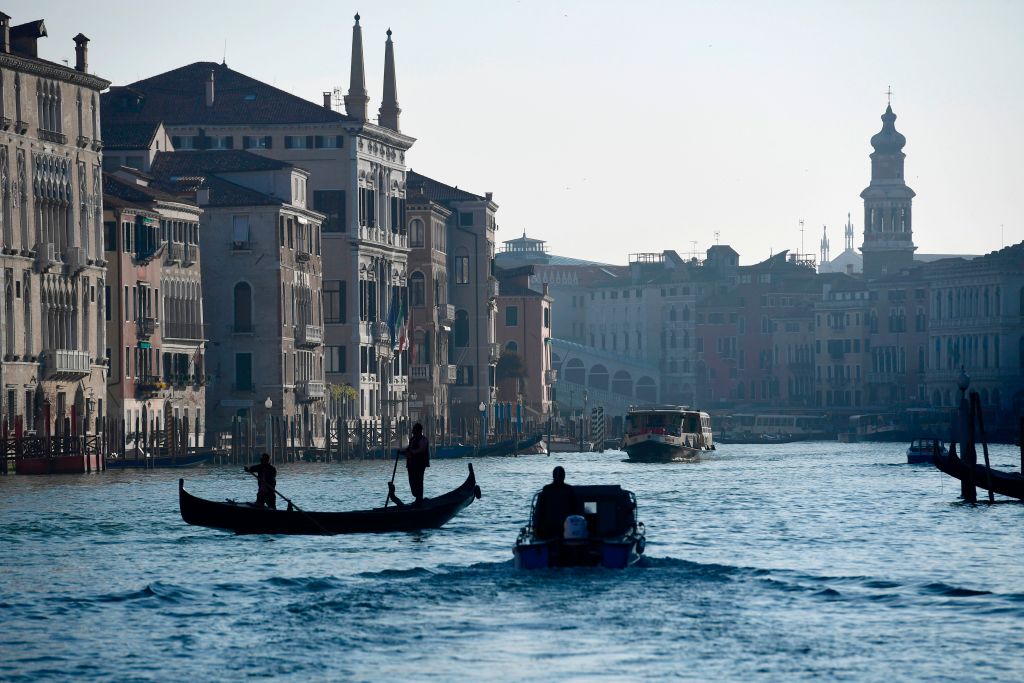
The Venice Biennale is the grandest event in the art calendar—an international exhibition designed to compare and contrast world cultures through visual art. Yet the Biennale’s stature has not inoculated it against controversy over the years. The exhibition has suffered several dust-ups in its 114-year history, from vexing grand prize winners to derogatory showcases of “primitive” African art. On the eve of the opening of the 57th edition of the Biennale, we examine the historic festival’s five most contentious controversies.
The Icelandic Pavilion at the 2015 Venice Biennale. Photo: alvendia1 via Instagram.
Christoph Büchel Turns a Deconsecrated 10th Century Church Into a Mosque (2015)
Police in Venice shut down Swiss artist Christoph Büchel’s installation at the 56th Venice Biennale, in which he transformed a deconsecrated 10th-century Church into a fully functioning mosque. Authorities claimed the artist violated safety guidelines by failing to apply for a permit to allow for the gathering of large numbers of people and closed the provocative piece because of safety concerns due to overcrowding.
Michael Soi, The shame in Venice 2 (2015) Photo via: Facebook
Chinese Artists Representing Kenya at the Venice Biennale (2013 and 2015)
Excitement over Kenya’s first-ever participation at the 55th Venice Biennale in 2013 was quickly dampened when the list of 12 participants included eight Chinese artists, two Italians—and only two Kenyans. The group show was panned, derided by one critic as “neocolonialism as multiculturalism.”
In 2015, Kenya’s pavilion followed a similar pattern, this time including six Chinese artists, one Italian, and only one Kenyan. None of the foreigners had ever been to Africa, or even referenced the continent—let alone the country—in their work.
According to NPR, the Italian-born real estate magnate and painter Armando Tanzini payed a six-figure sum to organize the show on behalf of the Kenyan government in 2013, insinuating that the Chinese participants payed their way into the show to raise their profile in their home country. Days before the 2015 opening, Kenya withdrew its participation. This year, Kenya’s pavilion, curated by Jimmy Ogonga, includes five Kenyan-born artists.
Gran Fury’s Pope Piece (1990). Photo: artnet Magazine.
AIDS Awareness Collective Provokes the Catholic Church (1990)
At the 1990 Biennale, the American AIDS activist arts collective Gran Fury challenged the Catholic Church’s stance on sex and contraception in a provocative set of posters at the Arsenale’s curated exhibition.
According to the New York Times, one of the posters featured a photo of the Pope alongside a text implying that the Church’s hard-line position on contraception was exacerbating the AIDS crisis. The collective also included a poster depicting an erect penis, which was considered blasphemous due to its close proximity to the image of the Pope.
The Biennale’s director of visual arts Giovanni Carandente reportedly considered omitting the poster before changing his mind at the 11th hour, which in turn caused the Vatican to deliberate whether it should write to the Italian government to have the offending image removed—a request that ultimately wasn’t submitted.
Robert Rauschenberg in 1966. Photo by Larry Ellis/Express/Getty Images.
Robert Rauschenberg Awarded Golden Lion (1964)
In 1964, a 39-year-old Robert Rauschenberg became the youngest artist and the first American ever to win the coveted Golden Lion award.
At the time, the jury’s decision was regarded as controversial because the artist exhibited only one artwork at the U.S. Pavilion in the Giardini. The remaining paintings were on view at the former American consulate—technically making him ineligible for the grand prize. At the last minute, U.S. Pavilion commissioner Alan Solomon hastily transferred three of Rauschenberg’s paintings to the Pavilion to meet the Biennale’s eligibility requirements.
The circumstances under which Rauschenberg won the top prize angered some European critics, who felt wronged by the American’s win. However, as the Rauschenberg Foundation notes, critic G. di San Lazzaro conceded, “No one can deny his real talent as a painter, and it is to this that the jury wanted to pay homage.”
Amedeo Modigliani, Jeanne Hébuterne (Au Foulard). Courtesy of Sotheby’s London.
Modigliani and African Sculpture Showcase Provokes Outrage (1922)
A retrospective of the late Amedeo Modigliani was highly controversial for its candid portrayal of the painter’s hedonistic lifestyle, alcoholism, and drug use—themes that were perceived as disagreeable and troublesome by conservative critics at the time. In response, the Venice town council set up an administrative board to restrict the avant-garde choices of secretary general Vittorio Pica. If that wasn’t bad enough, the same Biennale also featured a shockingly racist and belittling sculpture exhibition of African artists that was pejoratively promoted as “primitive” by organizers.
Never a dull moment in Venice.
Correction: artnet News previously incorrectly reported that Kenya was not participating in the 2017 Venice Biennale.